THE ANIMALIA KINGDOM- PHYLUM PORIFERA, COELENTERATA, PLATYHELMINTHES, NEMATODA, ANNELIDA, MOLLUSCA, ECHINODERMATA AND ARTHROPODA
In my last post I talk about the kingdom plantae, today will be studying extensively about the kingdom Animalia.

KINGDOM ANIMALIA
According to scientist study and research, There are at least two million species of animals in the world. Animals are multicellular that is they are made up of many cells and they're also heterotrophic which means they feed on other organisms as they did not produce their food by themselves (like plants)
In the world of Animals, They differ from the members of the other four kingdoms because they can locomote(which means they can move their bodies from one place to another or from one position to another) and their cells do not have cell walls. They have nervous systems so they are very sensitive to their surroundings. They are able to detect little changes happening around their surrounding with the help of their sound nervous systems.
There are about 33 Animal phyla we have which include:
(1). Porifera: sea sponges
(2). Coelenterata (Cnidaria): corals, sea anemones and Hydra.
(3). Platyhelminthes: flatworms
(4). Nematoda: roundworms
(5). Annelida: segmented worms
(6). Mollusca: slugs, snails and octopuses
(7). Echinodermata: sea urchins
(8). Arthropoda: a huge group which includes insects, crustaceans and many more
(9). Chordata: the vertebrate animals- fish, amphibians, reptiles, birds and mammals including humans.
The first eight phyla are also called invertebrates. Invertebrates animals are animals that do not have a backbone. The phylum chordata include the vertebrate.
I will be talking about the main features of the main invertebrates phyla below.
PHYLUM: PORIFERA- THE SPONGES
To start with, The sponges are the simplest invertebrates. Only the young move about- the adults are permanently attached to a surface on the sea bed.
They are hollow filter feeders, and the body cavity is connected to the external environment by the pores. There is little co- ordination or control compared to the vertebrate animals which have dominant co- ordination or control
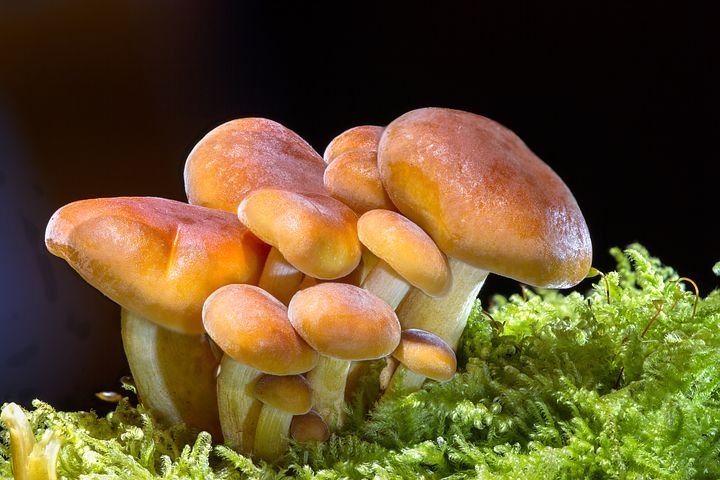
They range in size from a few millimetres to two metres and are supported by a series of calcareous spicules. As far as is known, the sponges are an evolutionary dead end and have no other close living relatives.
PHYLUM COELENTERATA
In the aspect of The COELENTERATA (also known as cnidaria), they include sea anemones, Hydra, jellyfish and also coral. They have soft bodies with a ring of tentacles for capturing prey. They have stinging cells on their tentacles for poisoning or immobilising prey and predators.
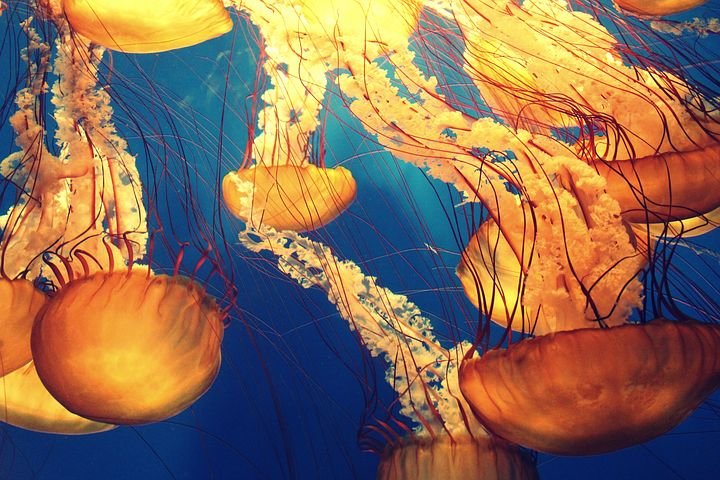
Coelenterates have two layers of cells in their bodies, which surround a central cavity. They have only one opening which is the mouth and their bodies have raidal symmetry.
PHYLUM: PLATYHELMINTHES- FLATWORMS
The FLATWORMS shows a relatively high level of organization. They range from 1mm to 30cm in length. They posses a front end where the mouth, major sense organs and the main integrating region of the nervous system are sited. They have flattened bodies with a mouth but no anus.
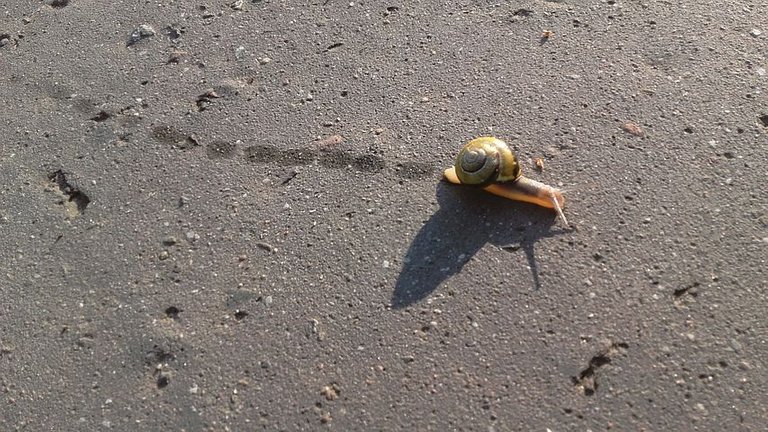
Image from pixabay by flatworms
They have no body cavity and rely on diffusion for everything. Also they depend on diffusion to even feed as their are one of the numerous animals which depend on the diffusion method to feed. They are hermaphrodite- they contain both male and female sex organs.
They live in the gut of other animals as parasites or are free- living in fresh water.
Examples of PLATYHELMINTHES- include planaria spp, which live in fresh water, tapeworms and liver flukes such as fasciola hepatica.
PHYLUM: NEMATODA (NEMATHELMINTHES)- ROUNDWORMS
Roundworms are thought to be the most numerous animals in the world. It is hard to get to a place and not find the presence of roundworms around the surrounding.
Nematodes have now thread-like bodies which are pointed at both ends and bilaterally symmetrical.
Their bodies are not segmented and are round in cross session which is how they get their name(ROUNDworm). In their body build up, They don't have a circulatory system but they do have a complete digestive system with both mouth and anus.
Nematodes can be dangerous and also some can be healthful.
The PHYLUM contains many important parasites such as as the popular Ascaris, which affect the gut of both humans and pigs and the family filariidae, which cause elephantiasis affecting the lives of up to 1.2 billion people in Africa and Asia. Nematodes are also a very important part of a healthy soil.
PHYLUM: ANNELIDA (SEGMENTED WORMS)
The annelid or segmented worms have a body divided into regular segment with structures and organs repeated along the body. They have a closed blood circulatory system.
There are more food diet with male and female reproductive organs and they have Bristol like structures called chaetae to help them move. Most of the time, they are found in moist soil and water and most are free living.
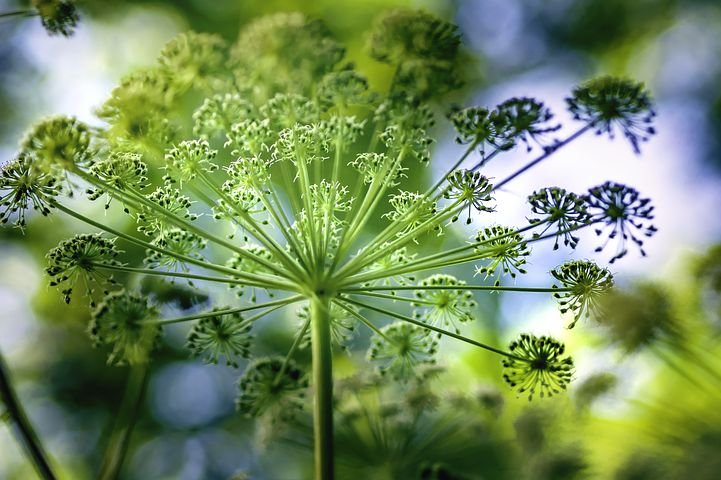
Image from pixabay by Angelica
The common earthworm, Lumbricus terrestris is a good example. earthworms are very important because they increase the fertility of the soil. They serve as a catalyst in the aspect of the fertility of the soil.
PHYLUM: MOLLUSCA
The mollusc have a wider range of lifestyles. They may have shells or be shells less, live in the sea or in freshwater or on land. The main features of the mollusc include a soft muscular foot with a soft body, which is often protected by the shell. Their bodies are divided into head, foot and visceral mass and they are not segmented. They breathe through gills.
Also one of their characteristics is they are slow in their movement compared to other animal phylum e.g snails.
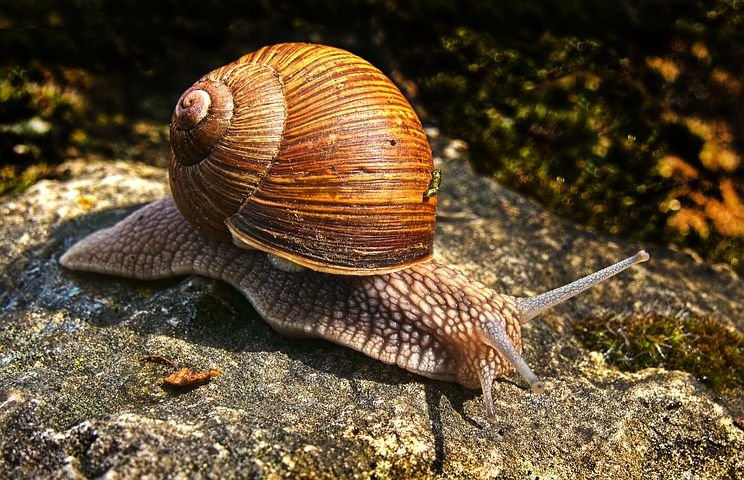
Examples of molluscs include slugs and snails such as the giant East African land snail (Achatina fulica), bivalves such as mytilis spp, the marine mussel and octopuses and squids.
PHYLUM: ECHINODERMATA
This phylum includes sea urchins, starfish and brittle stars. All the echinoderms are marine ( which means they live in the sea).
The skin contains many spines. Although they appear very simple, they have a mouth (on the lower side), a gut and an anus (on the upper side).
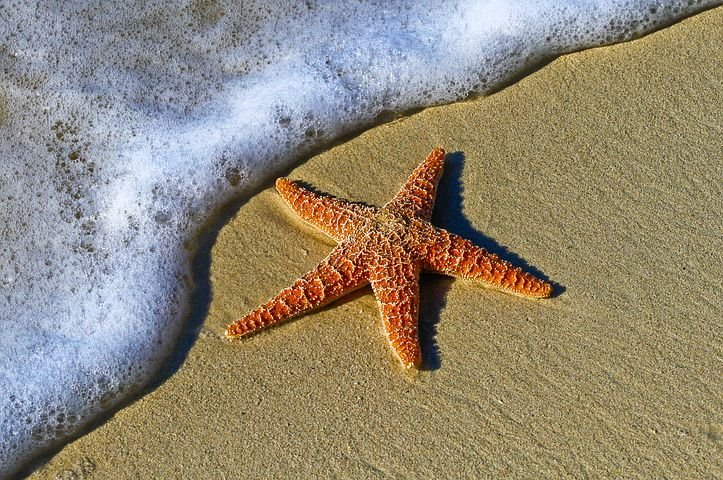
They move around using tube feet. The adults have five arms, but the larval stages do not. Examples include Asteris the common starfish, Echinus the common sea urchin and paracucumana tricolor, a brightly colored sea cucumber know as a sea apple.
PHYLUM ARTHROPODA
The PHYLUM of Arthropoda are one of the most largest, widest and most studied PHYLUM in terms of invertebrates animals.
It is hard to get to a place without meeting the Arthropoda examples surrounding us.
This phylum gets its name from two Greek words, arthro- joint and pons- foot. The ARTHROPODA are the most varied animals on the earth, with around a million different species. They have made use of a wide range of available ecological niches
However, they cannot grow very large. They have an external exoskeleton made of chitin that prevents excessive water loss, but also limits their growth. That is why no matter how they tend to consume food, their growth size is always limited to a particular size.
ARTHROPODs are animals with segmented bodies and jointed limbs. They have a well- developed nervous system and a complete gut from the mouth to the anus. Their nervous system is more advanced and standard compared to the other phylum class I have discovered above.
The PHYLUM Arthropoda is divided into a number of classes according to the number of limbs, presence and number of antennae and number of body parts. These include Insecta, Crustacea, Arachnida, Diplopoda and Chilopoda.
The Insecta live almost everywhere, although most live on the land. We come across insects most often. They have a body divided into three body parts: head, thorax and abdomen. They have three pairs of jointed legs on the thorax, along with one or two pairs of wings.
On their head, they have a pair of antennae and one pair of compound eyes. Insects include flies, butterflies and moths, beetles, wasps and bees and many other common groups. Some Insects are poisonous while others are non poisonous. Some are harmful to human being while some are useful to the human being use.
Insects need oxygen to respire. They get oxygen to the cells of their body through the spiracles- a line of openings along the abdomen.
Each spiracles leads into a tube called a trachea, which branches into smaller tracheoles that enter cells. The tracheae are strengthened with chitin to prevent them from collapsing inwards.
In the study of their tracheoles, Their tracheoles do not have chitin. The abdominal contractions and relaxations cause ventilation (breathing)- air enters the tracheae, down a pressure gradient.
Oxygen diffuses into the fluid at the end of the tracheoles, then diffuses throughout the cell supplied by that tracheoles, and is used for aerobic respiration.
The insects are a very important group of animals. Due to their wide use, characteristics and attributes, they are most studied more than other class of Arthropoda.
CONCLUSION
I will be stopping here for today, and In my next post, I will be talking about more detailed description of Cockroaches and grasshoppers and also I will be talking about the Crustaceans and also other ones.
Please don't hesitate to drop your comments below in the comment section.
REFERENCES
. https://byjus.com/biology/animal-kingdom-animalia-subphylum/
. https://en.m.wikipedia.org/wiki/Animal
. https://www.pmfias.com/classification-animalia-animal-kingdom/
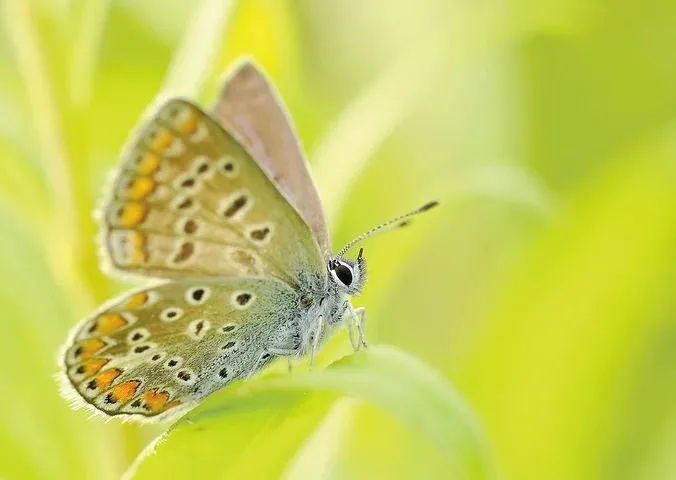
Congratulations @mandate! You have completed the following achievement on the Hive blockchain and have been rewarded with new badge(s) :
You can view your badges on your board And compare to others on the Ranking
If you no longer want to receive notifications, reply to this comment with the word
STOPTo support your work, I also upvoted your post!
Support the HiveBuzz project. Vote for our proposal!
@tipu curate
Upvoted 👌 (Mana: 0/18)
Thank you
I've never heard about 33 animal phyla. Do you mind expantiating on that? Also, some of your images seem to be wrongly captioned. The image of platyhelminthes is wrong, that looks like a molluscs. A typical representative of platyhelminthes is the tape or beef worm while that of annelida is earthworm. You can easily get free images of these animals on pexel or pixabay.
Good effort nevertheless
Yes there are 33 animal phyla or even more.
You can check this link to try read out.
Just that I didn't expanxiate on it more so I just picked the most common, popular and most studied one which I have come across.
https://simple.m.wikipedia.org/wiki/List_of_animal_phyla
Yea you are right about that concerning the caption. I should have put the image under the MOLLUSCA group.
Yes Annelida examples are like the earthworm.
I will improve on that next time in my next time.
Most of the time I always used pixabay as I always preferred images from there, I will be checking pexel also more often now.
Thanks for stopping by, I appreciate
You are welcome.
Thanks for your contribution to the STEMsocial community. Feel free to join us on discord to get to know the rest of us!
Please consider supporting our funding proposal, approving our witness (@stem.witness) or delegating to the @stemsocial account (for some ROI).
Thanks for including @stemsocial as a beneficiary, which gives you stronger support. Using the STEMsocial app could yield even more supporti next time.
This post earned a total payout of 8.604$ and 4.302$ worth of author reward that was liquified using @likwid.
Learn more.